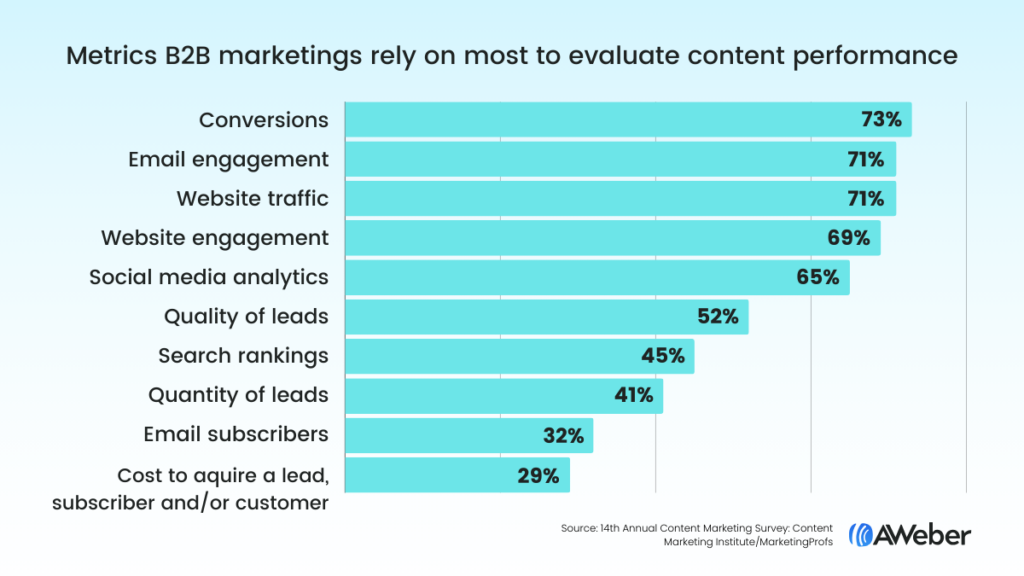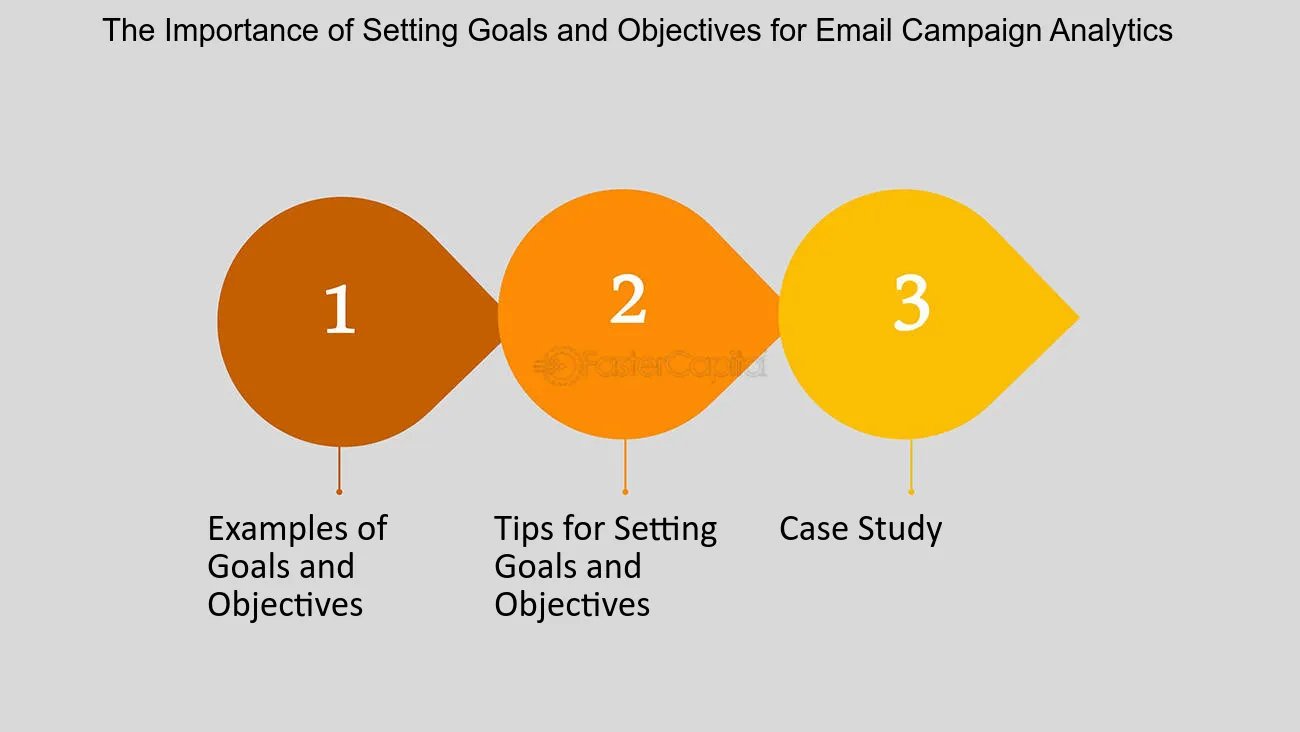Setting Measurable Email Marketing Goals: Tips for Success
In the fast-evolving landscape of digital marketing, setting measurable email marketing goals has become an essential practice for businesses seeking to maximize their return on investment. Goals not only provide direction but also serve as benchmarks for success, enabling marketers to gauge their performance and effectiveness. This comprehensive guide will delve into the intricacies of establishing measurable goals for your email marketing campaigns, ensuring that you navigate this critical aspect with clarity and purpose.
Understanding the Importance of Email Marketing Goals

Email marketing remains one of the most effective communication channels in any business strategy. Establishing clear and measurable goals is crucial to harness its full potential. In this section, we will explore how these goals influence overall marketing endeavors and why they should be a priority for any business.
The Role of Email Marketing in Business Strategy
Email marketing plays a pivotal role in connecting businesses with their target audiences. It serves as a direct line of communication, allowing brands to share updates, promotions, and valuable content. Understanding how this medium fits into a broader business strategy is vital.
An effective email marketing strategy can lead to increased brand awareness, customer engagement, and ultimately sales. When you incorporate setting measurable email marketing goals, you’re aligning your efforts with your business objectives. Whether it’s increasing revenue, acquiring new customers, or retaining existing ones, having defined goals helps streamline your approach and enhances accountability within your team.
Benefits of Establishing Clear Goals

Establishing clear goals provides numerous benefits that extend beyond mere numbers. They offer focus and direction throughout your campaigns. By setting specific targets, you foster a culture of accountability and encourage your team to work collaboratively towards common objectives.
Moreover, measurable goals make it easier to evaluate performance over time. Without concrete targets, it becomes challenging to determine what is working and what needs improvement. When you articulate your goals clearly, you create a framework for assessing various aspects of your campaigns, from content creation to list management.
Furthermore, clear goals enhance motivation. When team members can see tangible targets they’re striving to achieve, it instills a sense of purpose. This motivation can lead to increased creativity and innovation as individuals seek ways to surpass expectations.
How Goals Align with Overall Marketing Objectives
To effectively integrate email marketing into your overarching strategy, it’s important to align your email goals with your broader marketing objectives. This alignment ensures that every campaign contributes meaningfully to your business’s success.
For example, if your goal is to expand your audience base, then your email marketing strategy could focus on lead generation tactics, such as offering downloadable content in exchange for email subscriptions. Similarly, if retention is key, then your emails should be centered around loyalty programs and personalized recommendations.
By mapping out how each email marketing goal correlates with larger business aims, you can create a more cohesive approach. This will allow you to allocate resources effectively and prioritize initiatives that yield the best results.
Types of Measurable Email Marketing Goals

When it comes to setting measurable email marketing goals, it’s vital to understand the different types of goals you can establish. Each type addresses specific aspects of your email marketing efforts, providing a balanced approach to achieving overall success.
Conversion Goals: Turning Subscribers into Customers
One of the primary objectives of email marketing is to convert leads into paying customers. Conversion goals should focus on driving sales through targeted campaigns.
To set effective conversion goals, consider the buyer’s journey. Are your emails designed to nurture leads, educate them about your products, or drive immediate purchases? Focus on creating compelling content that answers questions and addresses pain points, guiding subscribers toward making a purchase.
Additionally, employing strategies such as limited-time discounts or exclusive offers can help spur conversions. Track your conversion rates diligently, adjusting your tactics based on what resonates most with your audience.
Engagement Goals: Boosting Open and Click Rates
Engagement is a crucial indicator of your email marketing effectiveness. High open and click-through rates suggest that your audience finds your content relevant and engaging. Setting engagement goals ensures that you prioritize creating valuable content that resonates with subscribers.
To boost engagement rates, experiment with subject lines, personalization tactics, and sending times. Conduct A/B testing to determine which approaches yield the best results. Remember to segment your audience based on behavior and preferences, crafting tailored messages that speak directly to their interests.
Consistency is also key. Regularly analyze your engagement metrics, looking for trends and areas for improvement. By focusing on engagement goals, you’re not just measuring numbers; you’re building relationships with your audience.
List Growth Goals: Expanding Your Reach
A growing email list signifies increasing interest in your brand. Setting list growth goals allows you to focus on expanding your reach and attracting new subscribers.
Consider implementing lead magnets to encourage sign-ups, such as free trials, e-books, or access to exclusive content. Promote these incentives across various channels, including social media, your website, and during events.
You might also want to explore partnerships with other brands for cross-promotions, leveraging their audiences to build yours. Monitoring your list growth regularly will help you identify successful strategies and highlight areas where improvement is necessary.
Retention Goals: Maintaining Customer Relationships
While acquiring new customers is vital, maintaining existing relationships is equally important. Setting retention goals ensures that your email marketing efforts contribute to long-term customer loyalty.
Create campaigns that focus on re-engaging inactive subscribers or nurturing loyal customers. Personalization plays a significant role here; tailoring content based on past purchases or interactions increases relevance and fosters connection.
Don’t underestimate the power of feedback. Encourage customers to share their thoughts through surveys and polls, showing them that their opinions matter. By prioritizing retention goals, you’re investing in sustainable growth.
Key Performance Indicators (KPIs) for Email Marketing

Once you’ve established measurable email marketing goals, it’s essential to define how to track progress. This is where Key Performance Indicators (KPIs) come into play. In this section, we will discuss important KPIs to monitor, how to set realistic targets, and tools that facilitate performance measurement.
Important KPIs to Track
KPIs are quantifiable measures that help you assess the effectiveness of your email marketing strategy. Some of the most important KPIs to track include:
- Open Rate: The percentage of recipients who open your emails.
- Click-Through Rate (CTR): The percentage of those who clicked on links within your email.
- Conversion Rate: The percentage of visitors who completed the desired action after clicking through from your email.
- Unsubscribe Rate: The percentage of recipients who opt out of future communications.
Monitoring these KPIs can provide insights into what works and what doesn’t in your campaigns. For example, if your open rate is low, it might indicate that your subject lines need improvement. Conversely, a high unsubscribe rate could signify that your content requires reevaluation.
How to Set Realistic KPI Targets
Setting realistic KPI targets begins with understanding industry standards for your niche. Research average rates for open rates, CTRs, and conversion rates to establish benchmarks for comparison.
However, remember that while benchmarking provides context, your unique audience may behave differently. Consider historical data from your previous campaigns to inform your targets. This ensures that you’re setting goals that are attainable yet still challenge your marketing capabilities.
It’s also beneficial to break down targets by campaign type. This way, you can identify which specific campaigns perform best and replicate successful strategies across future initiatives.
Tools for Monitoring Performance
Several tools are available to help track and analyze email marketing performance. Email service providers often have built-in analytics features, offering detailed reports on key metrics.
Beyond this, you can utilize third-party tools such as Google Analytics to track traffic from email campaigns to your website. This integration allows you to measure how well your emails convert visitors into customers.
Additionally, consider using Customer Relationship Management (CRM) software to gather data on subscriber behavior over time. These insights can inform your strategy, helping you refine your approach and improve overall effectiveness.
GoHighLevel helps businesses set and track measurable email marketing goals by offering a comprehensive suite of tools for automation, analytics, and CRM integration. The platform allows users to define specific objectives, such as improving open rates or increasing conversions, and then monitor performance through real-time analytics. With features like A/B testing, audience segmentation, and detailed reporting, GoHighLevel enables marketers to refine their strategies, ensuring they meet their email marketing goals effectively. This makes it an essential tool for optimizing email campaigns and achieving measurable success.
SMART Criteria for Goal-Setting

Incorporating the SMART criteria into your goal-setting process can enhance the effectiveness of your email marketing strategy. SMART stands for Specific, Measurable, Achievable, Relevant, and Time-bound.
Specific: Defining Clear Objectives
Specificity is at the core of effective goal-setting. When defining your email marketing goals, make sure they are clear and precise.
Instead of stating, “I want to increase open rates,” specify, “I want to increase open rates by 15% for our monthly newsletter.” This clarity provides a focused direction for your efforts.
Furthermore, ensure that your goals are actionable. This means outlining the steps needed to achieve them, whether that involves refining your content strategy, optimizing your subject lines, or segmenting your audience.
Measurable: Establishing Metrics for Success
Measurability is essential to tracking progress. Determine how you will quantify the success of your goals by identifying relevant metrics upfront.
For instance, if your goal is to increase conversions, outline how you’ll measure success, this could involve tracking sales made directly from email clicks or utilizing unique discount codes.
Building a framework for evaluation allows you to adjust your strategies based on real-time data, ensuring continuous improvement.
Achievable: Setting Realistic Expectations
While ambition is important, your goals must be achievable to maintain motivation. Assess your resources, capabilities, and constraints when setting targets.
If your current open rates are at 20%, aiming for a jump to 50% may not be realistic. Instead, consider setting incremental goals, like achieving a 5% increase every quarter. This approach fosters a sense of accomplishment and encourages ongoing effort.

Relevant: Ensuring Alignment with Business Goals
Your email marketing goals should align with your overall business objectives. Ensure that each goal serves a purpose and contributes to your organization’s mission.
If your company is focusing on brand loyalty, then setting goals around retention and engagement makes sense. However, if the priority is customer acquisition, shift your focus to conversion and list growth goals.
Establishing relevance ensures that your marketing efforts remain strategic and aligned with broader organizational ambitions.
Time-Bound: Creating a Timeline for Achievements
Deadlines create urgency and accountability. Assign specific time frames to your goals to keep your team on track.
For example, instead of saying, “Increase our list size,” specify, “Grow our email list by 25% over the next six months.” Timelines motivate action and help assess progress throughout the campaign duration.
Having short-term milestones in place can also break larger goals into manageable chunks, providing opportunities for celebration along the way.
Implementing Your Email Marketing Goals

With measurable goals established and a solid framework in place, it’s time to implement your email marketing strategies. In this section, we’ll explore how to craft an action plan, segment your audience for targeted campaigns, utilize A/B testing, and review and adjust goals regularly.
Crafting an Action Plan
An action plan outlines the steps required to achieve your email marketing goals. Begin by identifying the key initiatives and tactics that will drive your strategy forward.
This may include devising a content calendar, determining your email frequency, and outlining specific themes for different campaigns. Documenting your actions creates a structured approach, ensuring all team members understand their responsibilities.
Regularly revisit and update your action plan as needed. Flexibility allows you to adapt to changing circumstances, market trends, or shifts in consumer behavior.
Segmenting Your Audience for Targeted Campaigns
Audience segmentation enables you to tailor your email marketing efforts to specific groups. By categorizing subscribers based on demographics, behaviors, or preferences, you can create more relevant content.
For instance, if you offer multiple product lines, segment your list based on purchase history. This allows you to send targeted promotions to customers interested in specific categories, improving engagement rates.
Segmentation can also involve behavioral triggers, sending follow-up emails to subscribers who abandoned their carts or targeting loyal customers with exclusive offers. Tailored messaging fosters deeper connections and drives better results.
A/B Testing: Optimizing for Better Results
A/B testing involves comparing two variations of an email to determine which performs better. It’s a powerful technique for optimizing your campaigns and learning what resonates with your audience.
You can test various elements, including subject lines, visuals, call-to-action buttons, and sending times. By analyzing the results, you gain valuable insights into your subscribers’ preferences.
Implement findings from your A/B tests into future campaigns. Continuous experimentation fosters growth and innovation within your email marketing strategy.
Reviewing and Adjusting Goals Regularly
The digital marketing landscape is dynamic, and your email marketing goals should reflect that. Set aside regular intervals, whether quarterly or bi-annually, to review your goals.
Assess performance against the KPIs you established earlier. Identify what’s working, what isn’t, and where adjustments are necessary. If certain goals have been consistently achieved, it may be time to raise the bar and set more ambitious targets.
Conversely, if some goals no longer align with your objectives or feel unrealistic, don’t hesitate to recalibrate. Agility and adaptability are fundamental to sustained success in email marketing.
Final Thoughts

To wrap things up, establishing quantifiable email marketing objectives is vital for enhancing the potency of your campaigns. Grasping the importance of goal-setting, analyzing various goal types, tracking progress through KPIs, utilizing the SMART framework, and devising a thorough action strategy will equip you for remarkable triumphs in the realm of email marketing.
As you set forth on this path, keep in mind that adaptability, innovation, and an eagerness to grow are fundamental aspects of a successful email marketing blueprint. Embrace the journey and persistently aim to engage, convert, and retain your audience. With commitment and savvy planning, you can turn your email marketing initiatives into a formidable asset in achieving your business aspirations.




